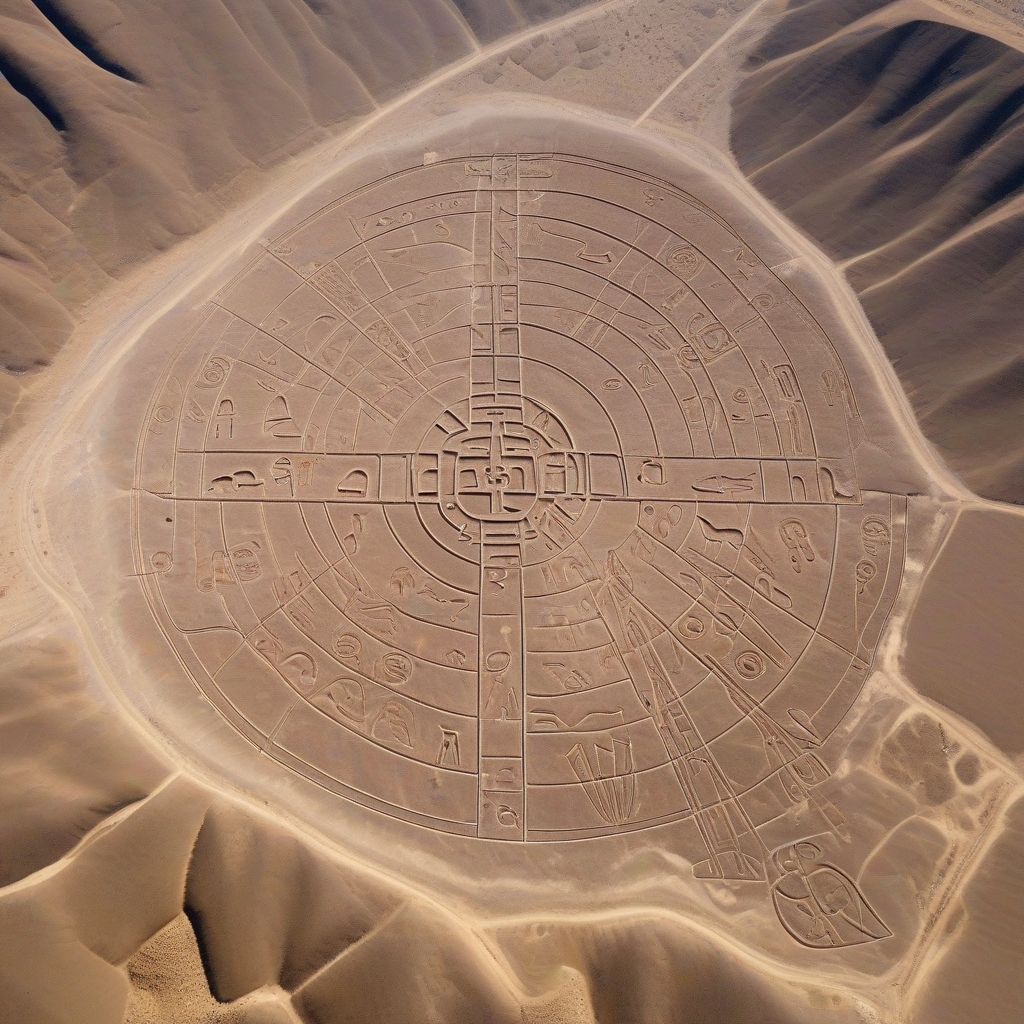In a groundbreaking development, archaeologists have uncovered new Nazca geoglyphs in Peru utilizing artificial intelligence (AI). This innovative approach has not only expanded our understanding of the ancient Nazca civilization but also demonstrated the potential of AI in the field of archaeology.
The Marvel of Nazca Geoglyphs
The Nazca Lines, enormous designs etched into the arid landscape of southern Peru, have mystified scientists and researchers for decades. These geoglyphs, some of which are over 2,000 years old, depict various shapes ranging from simple lines to intricate figures of animals and plants. Their true purpose remains a subject of debate, but they are widely believed to hold ceremonial or astronomical significance.
Previously discovered using traditional methods, the geoglyphs span hundreds of square kilometers. However, advancements in technology have now opened new avenues for exploration and discovery.
AI: The Game Changer in Archaeology
The integration of AI has brought a paradigm shift in archaeological research. By analyzing high-resolution satellite imagery and aerial photographs, AI algorithms can swiftly and accurately identify patterns that human eyes might overlook.
How AI Works in Discovering Geoglyphs
Researchers employed machine learning algorithms trained on existing geoglyph patterns. The system was fed vast amounts of data, enabling it to recognize subtle differences in the terrain that could indicate the presence of undiscovered designs. This process involves:
- Data Collection: Gathering high-resolution images and geographical data.
- Algorithm Training: Feeding the AI system with images of known geoglyphs to train it on pattern recognition.
- Analysis: Running the trained AI on new data to identify potential geoglyphs.
- Verification: Cross-referencing AI findings with on-the-ground verification.
New Discoveries: An Unveiling
The collaborative effort between archaeologists and AI specialists has yielded astonishing results. Several new geoglyphs, previously hidden beneath the sands of time, have been brought to light. Among these discoveries are:
- Human Figures: Detailed representations of human forms
- Animal Motifs: New depictions of animals, adding to the known repertoire
- Geometric Shapes: Complex geometric patterns that challenge our understanding of ancient Nazca art
Implications and Future Research
The discovery of new geoglyphs has profound implications for our understanding of the Nazca civilization. Each newly uncovered design provides insights into the culture, beliefs, and technological prowess of this ancient society.
Cultural and Historical Significance
The added diversity of shapes and patterns offers a richer canvas to study Nazca iconography. These findings could:
- Deepen Understanding: Enhance our knowledge of Nazca religious and social structures
- Myth and Rituals: Provide clues to the myths and rituals that may have inspired the geoglyphs
- Advanced Techniques: Show the evolution of construction techniques over time
Challenges and Considerations
While AI has proved to be a powerful tool, it is essential to approach these findings with caution. Computer-generated patterns must be carefully verified through fieldwork to rule out natural formations or modern interventions.
Maintaining Integrity
Ensuring the authenticity of new discoveries requires:
- Field Verification: Ground-truthing AI-generated findings with physical exploration
- Interdisciplinary Collaboration: Continued collaboration between AI experts and archaeologists
Conclusion: A Bright Future for Archaeological Exploration
The integration of AI in archaeological research marks a significant leap forward. The discovery of new Nazca geoglyphs exemplifies the potential of technology to unravel historical mysteries and preserve human heritage. As AI continues to evolve, it promises to uncover even more secrets buried in the sands of time.
Ultimately, the collaborative synergy between AI technology and human expertise heralds a new era in our quest to understand ancient civilizations, ensuring their legacies endure for generations to come.

Leave a Reply